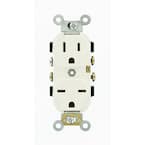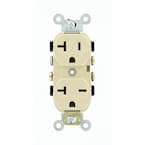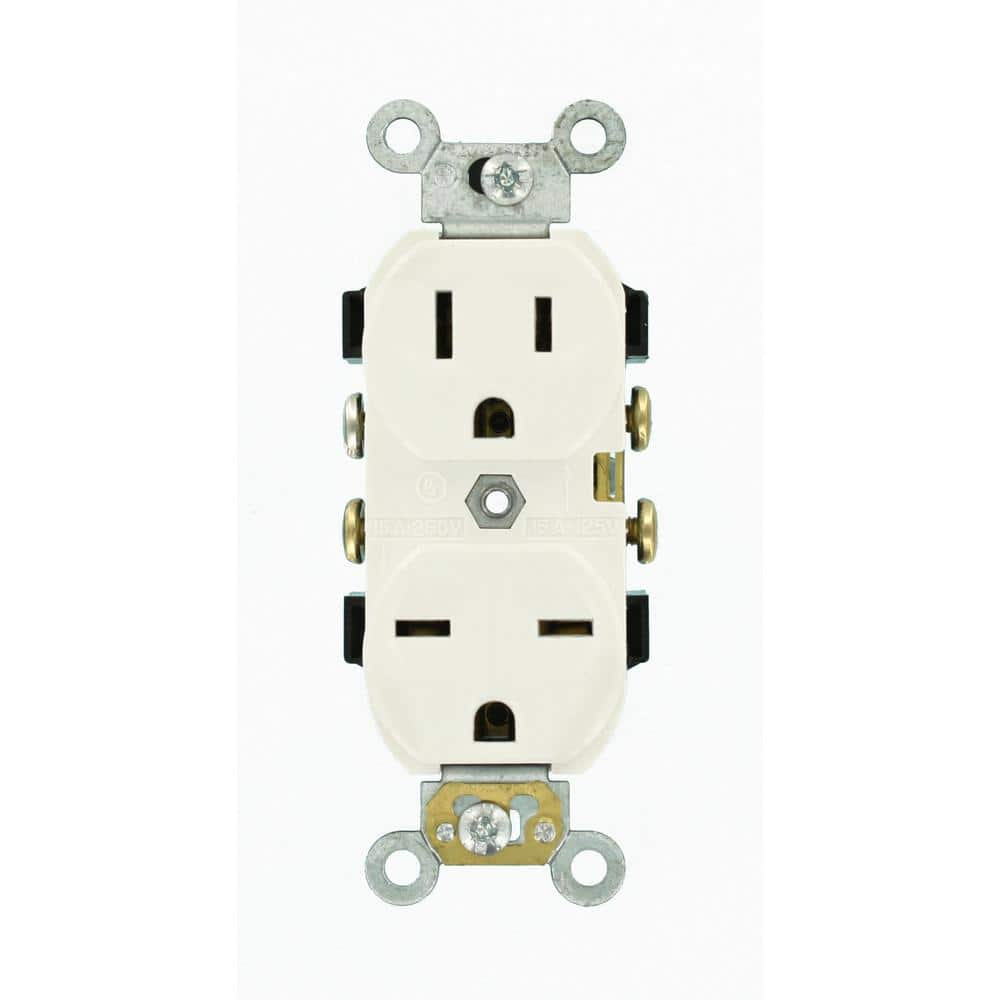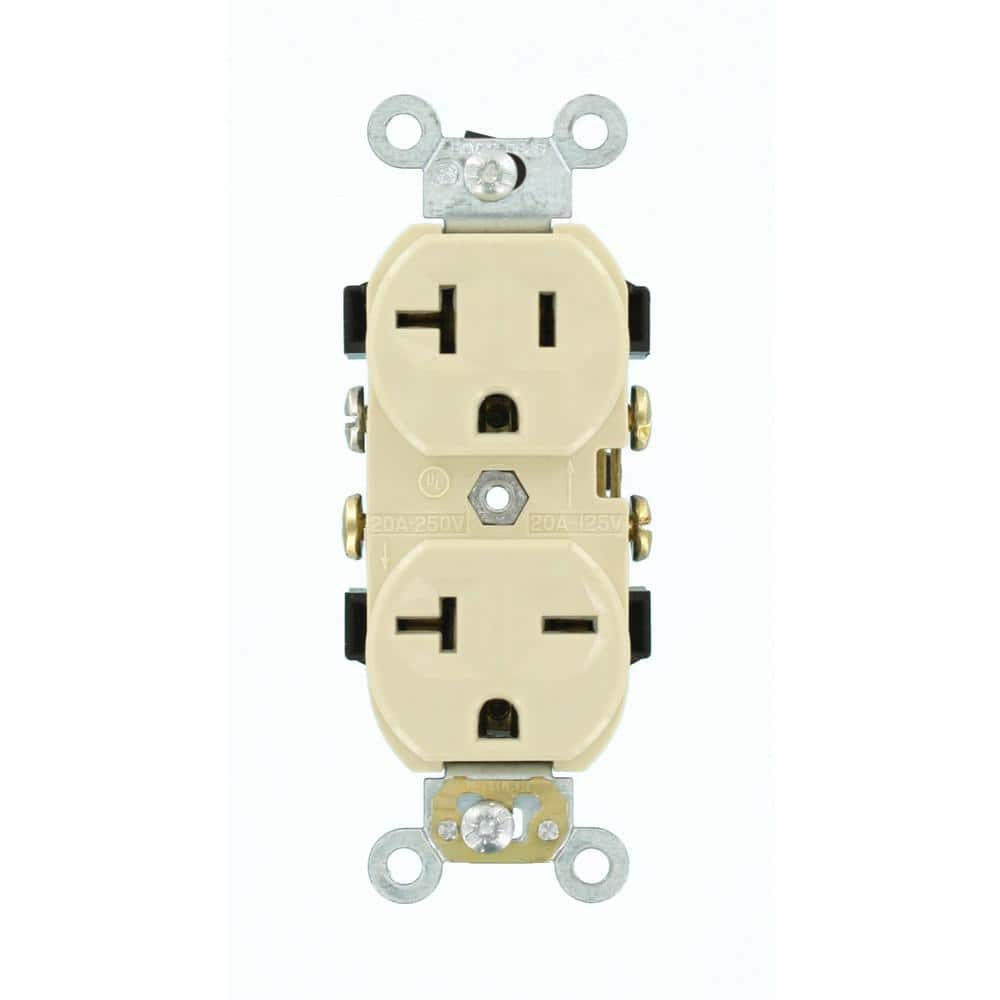You are using an out of date browser. It may not display this or other websites correctly.
You should upgrade or use an alternative browser.
You should upgrade or use an alternative browser.
Strange duplex receptacle.
- Thread starter ritelec
- Start date
- Status
- Not open for further replies.
- Location
- Placerville, CA, USA
- Occupation
- Retired PV System Designer
I cannot see it being a defect with the circle F stamped right where the EGC connection would be. Nor can I see any good reason to photoshop it.A friend sent me this.
Is there a purpose for it ?
Don’t think it was photoshopped.
Manufacturer defect?
Two circuits on one yoke, one of them ungrounded? Isolated ground?
'
FYI, Google Lens finds nothing like it except conventional duplex, not can it find the source image anywhere.
Last edited:
LarryFine
Master Electrician Electric Contractor Richmond VA
- Location
- Henrico County, VA
- Occupation
- Electrical Contractor
Tulsa Electrician
Senior Member
- Location
- Tulsa
- Occupation
- Electrician
Tulsa Electrician
Senior Member
- Location
- Tulsa
- Occupation
- Electrician
Fun facts
Who knew?
Who knew?
Attachments
-
 Screenshot_20231209-165851.png272.3 KB · Views: 32
Screenshot_20231209-165851.png272.3 KB · Views: 32 -
 Screenshot_20231209-165711.png150.2 KB · Views: 29
Screenshot_20231209-165711.png150.2 KB · Views: 29 -
 Screenshot_20231209-165633.png102.3 KB · Views: 27
Screenshot_20231209-165633.png102.3 KB · Views: 27 -
 Screenshot_20231209-165500.png170 KB · Views: 27
Screenshot_20231209-165500.png170 KB · Views: 27 -
 Screenshot_20231209-165347.png187 KB · Views: 27
Screenshot_20231209-165347.png187 KB · Views: 27 -
 Screenshot_20231209-164957.png263.6 KB · Views: 29
Screenshot_20231209-164957.png263.6 KB · Views: 29
- Location
- Tennessee NEC:2017
- Occupation
- Semi-Retired Electrician
That Circle F in the lower half is in the same spot as the upper portion, neither are in the space the EGC slot would be.I cannot see it being a defect with the circle F stamped right where the EGC connection would be. Nor can I see any good reason to photoshop it.
Two circuits on one yoke, one of them ungrounded? Isolated ground?
'
FYI, Google Lens finds nothing like it except conventional duplex, not can it find the source image anywhere.
mopowr steve
Senior Member
- Location
- NW Ohio
- Occupation
- Electrical contractor
Are the terminals that connect the grounded upper receptacle also attached to the lower non-grounded section?
Seems to me I seen something similar to this once where the non-grounded section was used for aerial antenna, but I think those slots were angled a bit.
Seems to me I seen something similar to this once where the non-grounded section was used for aerial antenna, but I think those slots were angled a bit.
marmathsen
Senior Member
- Location
- Seattle, Washington ...ish
- Occupation
- Electrical Contractor
Check out this one I found while trying to find the one in the OP.

Rob G, Seattle

Rob G, Seattle
- Occupation
- Licensed Electrician
I bet the bottom is for an antenna.A friend sent me this.
Is there a purpose for it ?
Don’t think it was photoshopped.
Manufacturer defect?
hbiss
EC, New York NEC: 2017
- Location
- Little Falls, New York NEC: 2017
- Occupation
- EC
That one, the bottom is 240V for a window AC.Check out this one I found while trying to find the one in the OP.
My guess is that the bottom is supposed to be switched for a lamp with a two prong plug.A friend sent me this.
Is there a purpose for it ?
Don’t think it was photoshopped.
Manufacturer defect?
-Hal
letgomywago
Senior Member
- Location
- Washington state and Oregon coast
- Occupation
- residential electrician
I've removed that exact one and cut in a 2 gang to update it to white TRThat one, the bottom is 240V for a window AC.
My guess is that the bottom is supposed to be switched for a lamp with a two prong plug.
-Hal
LarryFine
Master Electrician Electric Contractor Richmond VA
- Location
- Henrico County, VA
- Occupation
- Electrical Contractor
kwired
Electron manager
- Location
- NE Nebraska
- Occupation
- EC
I saw that exact same picture on a facebook group just recently. Group had no real limitation for membership and the speculation about it was all over the place.A friend sent me this.
Is there a purpose for it ?
Don’t think it was photoshopped.
Manufacturer defect?
kwired
Electron manager
- Location
- NE Nebraska
- Occupation
- EC
I think current manufacturers, or at least some of them, still have a catalog number for something like this though it may be difficult to find a seller that has them in stock.Check out this one I found while trying to find the one in the OP.

Rob G, Seattle
LarryFine
Master Electrician Electric Contractor Richmond VA
- Location
- Henrico County, VA
- Occupation
- Electrical Contractor
I think current manufacturers, or at least some of them, still have a catalog number for something like this though it may be difficult to find a seller that has them in stock.



Leviton 15 Amp 125/250 V NEMA 6-15R Duplex Outlet/Receptacle, White (1-Pack) 5031-W 5031-W - The Home Depot
Leviton Commercial grade devices are built to the most demanding standards for performance and reliability. Ideal for heavily used areas in homes, offices, schools and commercial buildings. They are the
www.homedepot.com

Leviton 20 Amp 125/250 V NEMA 5-20R/6-20R Duplex Outlet/Receptacle, Ivory (1-Pack) 5842-I 5842-I - The Home Depot
Leviton Commercial grade devices are built to the most demanding standards for performance and reliability. Ideal for heavily used areas in homes, offices, schools and commercial buildings. They are the
www.homedepot.com
Think I still have one like this in a milk crate in my garage filled with 15 to 50 amp devices. I showed it to an apprentice and asked him what circuit breaker combination would be required to satisfy code. Told him that a three pole plug in breaker for a residential panel might work. Always taught that one breaker can only be used to power a device on a yoke. I did plug a 3 pole 250 volt circuit breaker to show the apprentice that it would turn off all power to such a combination 120/240 volt device. Just had to make sure that the middle pole feeds one side of 240 volt receptacle. For safety sake of Johnnie DIY homeowner firmly believe such a device should not be UL approved or allowed in a house.
kwired
Electron manager
- Location
- NE Nebraska
- Occupation
- EC
Multiwire circuit to it should be acceptable as well, on a two pole breaker. Dependent on expected load to be plugged in of course.Think I still have one like this in a milk crate in my garage filled with 15 to 50 amp devices. I showed it to an apprentice and asked him what circuit breaker combination would be required to satisfy code. Told him that a three pole plug in breaker for a residential panel might work. Always taught that one breaker can only be used to power a device on a yoke. I did plug a 3 pole 250 volt circuit breaker to show the apprentice that it would turn off all power to such a combination 120/240 volt device. Just had to make sure that the middle pole feeds one side of 240 volt receptacle. For safety sake of Johnnie DIY homeowner firmly believe such a device should not be UL approved or allowed in a house.
letgomywago
Senior Member
- Location
- Washington state and Oregon coast
- Occupation
- residential electrician
Ac over 10 amps at 240 might put it over thisMultiwire circuit to it should be acceptable as well, on a two pole breaker. Dependent on expected load to be plugged in of course.
- Status
- Not open for further replies.





